Expats often have the fun task of explaining very complicated things about their home country to people with very little knowledge (and often a lot of prejudice) about the subject. This is an article I've written for my new website, Recetas Americanas, a site where I try my best to show the Spanish speaking world what I truly consider American food to be. I haven't published it there yet-- I've been lazy to translate and to bother Ale with the edits. I figured I would post it here first and ask for your feedback. Thanks in advance! -Lauren
What is American Cuisine?
As an American, you would think it would be easy to answer this question. In reality, however, American cuisine is quite complex. Unfortunately, as an English teacher in Spain I realize that American food has a bad reputation. Students argue that American food is nothing more than fast food and they are often under the impression that all Americans are fat—except (magically) those that they actually know! It’s a shame that my students are so ignorant, but I can understand why.
My country is famous for its food—its fast food that is. Popular and inexpensive chain restaurants have historically served fattening food in oversized portions. But just because these chain restaurants have been successful in both the US and abroad doesn't mean that they reflect the average American’s eating habits.
I haven't eaten in a McDonalds since I was a child. I have never tried the popular Taco Bell and I'd rather eat a can of tuna before ordering Domino's pizza. And I'm not the exception! My friends and family rarely (if ever) eat fast food.
So, what is American food then?
Well, to answer that question we have to consider some important factors.
- The history of the US
- The size of the US
- The cultural background of settlers to the US
The Culinary History of the US
Let's start with some history. Before Europeans colonized the US it was inhabited by thousands of groups of indigenous Americans. Their eating habits were influenced by their geographical location and the variety of foods available there. For example, the food and animals found in the American northeast are extremely different from those available in the southwest. Common foods to many areas were corn, beans, squash, fish, meat, fruit and nuts.
In the 1500's and 1600's colonization began with the earliest British colonies. The colonists tried to cook similar dishes to what they had been used to back home, but they found that they often had to adapt their dishes to available ingredients. Corn became an important staple in the northeastern colonies since wheat was difficult to grow.
As the US grew colony-by-colony, settlers continued to adapt to the land. They learned what crops they could grow and were introduced to new produce and animals. Common animals to hunt at the time were deer, bears, and wild turkey.
Immigrants Shape Cuisine
Immigrants began affecting American cuisine early on. Although most of the first colonists were British, the current US also saw Dutch, French, and Spanish colonies too Although these colonies were not successful long term, many of these settlers and their culinary traditions remained to influence American cuisine for generations.
As slavery proliferated in the US so did the food and cooking techniques of different African cultures. Some African slaves had brought seeds with them, which they planted in their US plantations. They also popularized the barbecue cooking technique and made many "poor man's" dishes with undesirable greens and vegetables as well as animal parts like tripe, pig's feet, etc.
In the 1800's the US was still expanding and acquiring new land. As the US grew larger regional cooking became more and more prevalent. The climate, soil, vegetation, and wildlife varied so much from one part of the US to another and the settlers had to adapt to their surroundings.
Immigration also continued in waves. First came the British, Irish and German immigrants. Later, the US acquired much of the current American southwest. Many native Mexicans decided to stay there although it was now part of the US. In the mid 1800s many Chinese immigrants arrived followed by the Japanese in the late 1800s. Throughout the next century when the US was involved in two world wars, immigration continued by people from all over the world.
Historic Trends
In the early 1900s the Great Depression caused Americans to be more resourceful with food. Meat wasn't as prevalent and many stews and one-pot meals became popular.
One important food development occurred after WWII. It was at this time that the US became much more international and people could suddenly have what used to be seasonal produce all year long. Processed foods also became common due to the ease of transportation (the American Highway system was born) and some of the most common "American" brands became household names. Packaged food, canned food, frozen food... this era is to blame for much of our bad reputation!
But in the 1960s Julia Child burst onto the American culinary scene. She explained French cuisine in a way that was easy for American home cooks to understand. People realized they could recreate fine dining in their homes.
In the decades that followed the US has seen many different culinary trends. Immigration has continued, bringing many Asian and Latin American cultures and cuisines to the US. We have also seen the counter movement to canned and processed foods. Famous American chefs like Alice Waters stressed the importance of cooking with fresh, local, and seasonal ingredients.
As the US became more economically prosperous, US restaurant culture continued to progress. Restaurant patrons began to demand fine dining and were quick to accept expensive imported products and wines. Ethnic cuisine became more and more popular—people often tried a place if only to seem more cultured. The celebrity chef was also born. Today cooking programs and celebrity chefs plague American TV channels but this phenomenon is really only a few decades old!
We went through the fat free movement, the organic movement, the local foods movement, the raw foods movement, the sushi obsession movement… some of these trends stuck and have continued to be adapted today and others lasted only a short time (luckily!)
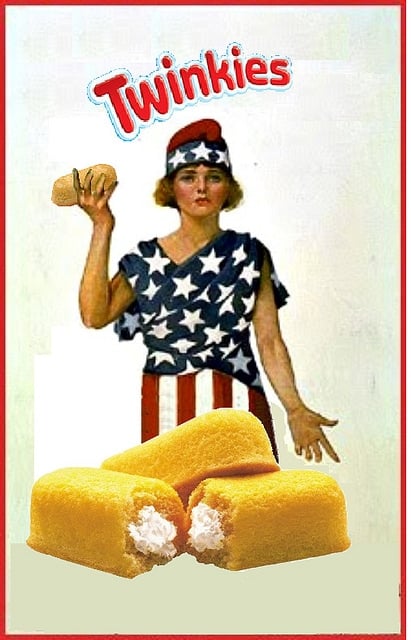
The Size of the US
Let’s remember that the US is an enormous country, more than 2 times the size of EUROPE and spanning 7 different time zones. The country’s size means that its climate and growing conditions vary from region to region—as does its cooking. Due to various and diverse immigrant pockets, people originally called the US a melting pot, where all cultures fused together. But we soon realized that this metaphor wasn't quite right. The US is more of a mixed salad; we have many different cultures that complement one another to create a greater (and better tasting!) salad as a whole.
What is American Food Today?
American food today is still an eclectic mix. It is based widely on immigrant influences and regional produce and traditions. Americans have become master adapters and experimenters-- taking traditional ethnic recipes and turning them into a new genre of American cooking.
Americans also love sweets. We have mastered desserts from all over the world. We love our versions of crème brulee, chocolate cake, apple pie, cookies, brownies, etc. For better or for worse, in the US fruit and yogurt don’t count as dessert!
Source
American food is finally being appreciated as a mix of regional cuisines based on locally available produce and influenced by ethnic history. It is a constantly evolving and adapting cuisine that leaves room for innovation at all levels. It’s a cuisine based on the fusion of elements and ingredients from a variety of cultures. It’s a popular cuisine-- this decade has seen the power of the celebrity chef, the influence of the food blogger, and the domination of food television. With all of this media attention home cooks have become more informed and experimental than ever before.
I am excited about the future of American food and the continuation of regional American cuisine. I hope that as a reader you have a somewhat better idea of what American cooking is like. I hope you realize that our culinary endeavors go far beyond fast food and chain restaurants. I hope you’ll try the recipes on Recetas Americanas and that you’ll be able to visit the US yourselves one day and experience some of my favorite dishes!
Some Important Regional Cuisines
New England: As a New England girl myself, I have to start with this region! New England is comprised of 6 states in the Northeastern US. Our cuisine is characterized by the availability of fresh seafood. Boiled lobsters, clam chowder, and fried seafood are common. We are also fortunate to enjoy a multitude of apple varieties and fresh blueberries in the summer. Presently, we also have a strong local beer culture with many local New England breweries offering some delicious brews.
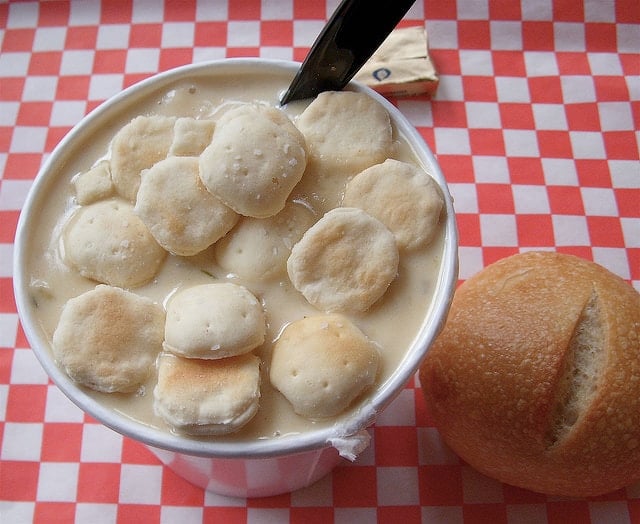
Source
Tex-Mex: This super popular regional cuisine has spread from Texas to the rest of the US. It is a fusion of American and Mexican cooking. Examples of some popular Tex-Mex dishes are Chili con Carne, Tortilla Chips with Queso Fundido, and Taco and Burrito pre made kits. These foods are definitely not authentic Mexican, but rather adapted Tex-Mex versions.
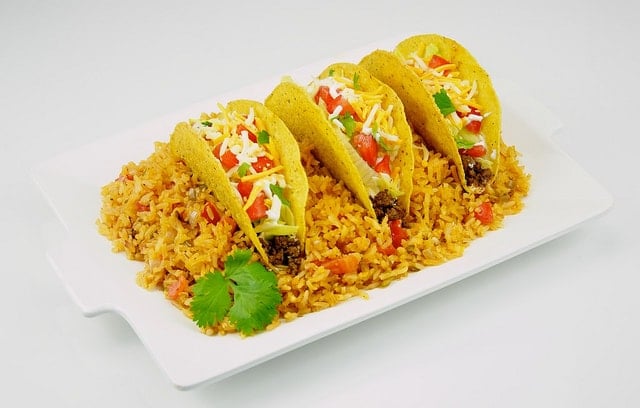
Southern US: Southern American cuisine is actually a large category that encompasses many smaller regions within the area. But some common characteristics are ingredients such as sweet potatoes, corn, peaches and pecans. They also use some cooking techniques famous to the region such as an open barbeque and pan-frying. Southern cooking is known throughout the US as “comfort food” and although it is not the healthiest of American regional cuisines, it is often a favorite!
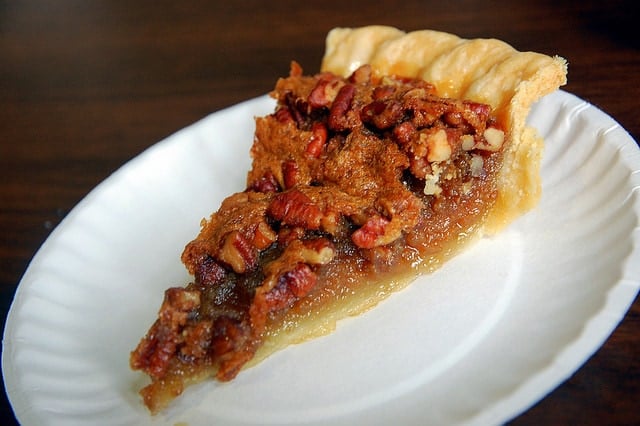
I would love to get some insight from my readers about American cuisine. If you are American-- do you agree with what I've written? Did I miss anything important? If you aren't from the US, what are your impressions of American cuisine? Did they change after visiting the US (if you have that is!).
Sources and Further Reading:
State of American Cuisine (James Beard)
American Food History (Leites Culinaria)



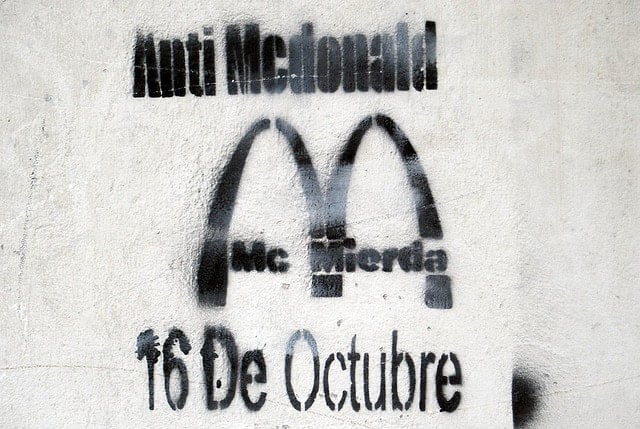
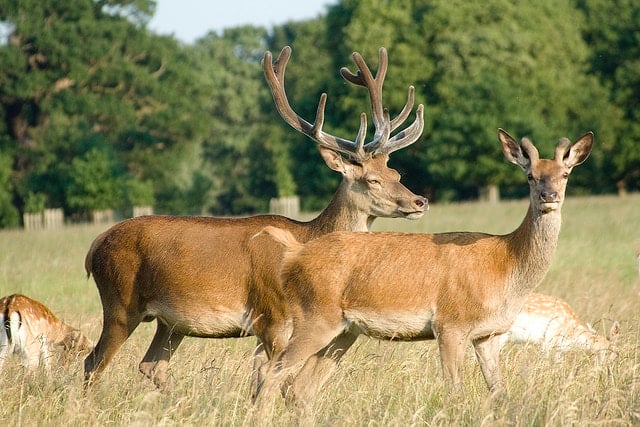
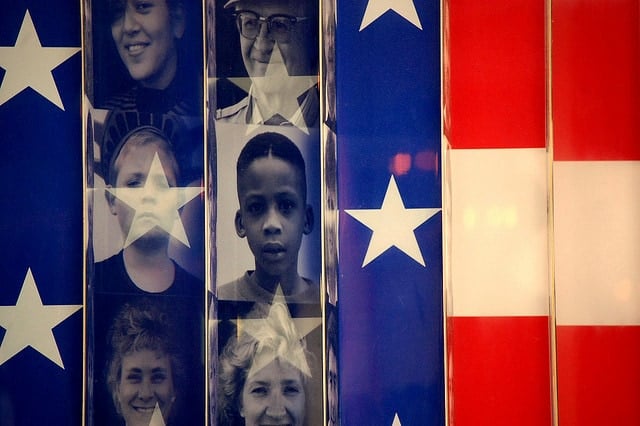

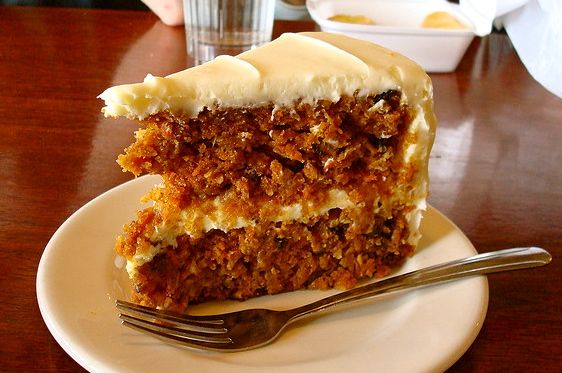
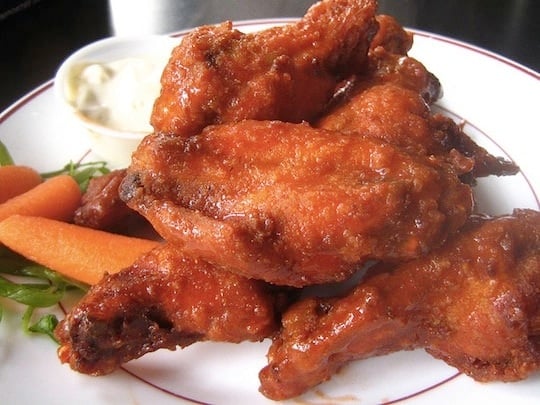
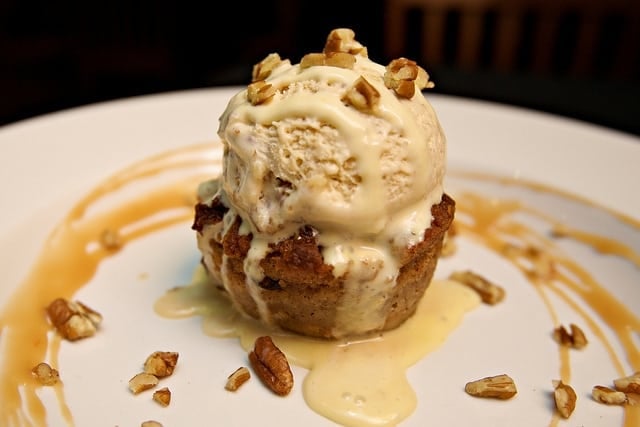
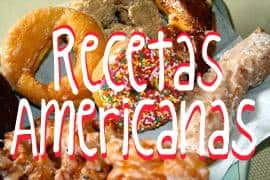
Melanie G
Hi Lauren,
Great article.. I can sympathise because being British and living in France, my native food is definitely considered to be well below par, whereas I know I can get better French food in London than I can in most restaurants here, more inventive cooking in a local pub in Britain, and without doubt more choice than I will ever find anywhere in France.
I'm hoping for the day when vegan food hits France, one of the most positive food streams in the US.. way ahead of anywhere else on that score I'd say..
Lauren Aloise
Hi Melanie! It is so ironic that British food has a bad reputation (much like "American" food) and yet in both places you can find some of the most innovative, forward thinking food movements in the world. I love my meat yet I'd be happy to see good vegan food pop up in Spain as well. It is a very positive movement... and delicious!
Charu
A nice recap of culinary history, and so funny all your American foodie pics are high carb! I'm hoping for the day when we will see vegetarian food hit the interstate...waiting with my fingers crossed.
Lauren Aloise
Thanks Charu! I didn't even realize that about the pictures, but its true! And ironic since I personally try to eat a low carb lifestyle!
Jessica Alcorn
Great article! Whenever people ask me about American cuisine, I feel that I can never come up with a concise explanation or explain the many regional dishes that make up US food. It really pissed me off when my co-workers joked about how I would be eating badly when I went home for Christmas and how much I would miss Spanish food. I love Spanish food too but I was like the majority of you have never been to the US so what do you know about what I'm going to be eating!! As for regional cuisines, my mom spent about 10 years living in New Orleans and cooks a lot of Cajun food(which is amazing!) I loved having southern comfort food and cajun classics at home! Yum!
Kaley [Y Mucho Más]
I can't believe they did that! How rude.
I've only ever encountered high school kids being that rude. It's very sad to see adults doing that.
Pam
I can't thank you enough for doing this. I never thought to write an article but have managed to say everything I would have wanted and more!!! This is going to be next weeks lesson plan for ALL of my students!! Maybe I can print out a few copies and leave it in the staff room for my fellow teachers as well.
-Pam
Lauren Aloise
Thanks for the compliment Pam! I'd love to know the reactions of your students and teachers! What ages are you teaching and where (if you don;t mind sharing!)? 🙂
Cassandra
Seeing all of the comments here, you've hit a hot topic, Lauren. Explaining American food and the related culture is complex, especially since there are so many misconceptions abroad.
This article is concise, informative, and with room for elaboration--I wish I'd had it as a reference last year when a co-teacher ranted about how Americans only eat unhealthy foods, are all obese, and actually, kids, have no particular local cuisine.
Lauren Aloise
Yes! After seeing all of the suggestions I'll probably be following up this article with a few more in the future. I love this topic in general (had thought about doing a Master's in something related...)
Carly
Very interesting read! I know we all get sooo tired of being bombarded by these questions and typically it's like a huge group of Spaniards putting you on the spot asking you, "what is exactly American food?", as one person always chimes in expectedly "Hamburgers?" (usually with a grin and a laugh). I have often responded by emphasizing the size of the US and try to focus on explaining regional foods. I am from Wisconsin so I usually mention venison stews, fish fry (cod/perch), cranberries, hot dishes/casseroles. I think another cool thing to discuss would be the popularity of fusion foods restaurants you can find in major US cities. Also, there are restaurants in Chicago that are worldwide famous, for example Charlie Trotters..known for his use of fresh, organic, locally grown cuisine. California cuisine is also extremely healthy, a lot of seafood, fresh, organic ingredients, farmers markets, etc...California is also known for their famous healthy "fast foods", like pitas to order, creative salads, or places like the Newscafe which boast healthy breakfast eating. Also, in California food trucks have become hugely popular. Food trucks with creative/fun names that sell very creative fusion foods or sweets. Anyways, thanks for the blog! good luck!
Lauren Aloise
Thanks for your comment Carly! I love the idea of including the food truck movement. I've been in Spain for most of its popularity in my area, but it sounds like a dream come true and I'd love to be able to check out all the cool ones you see featured on TV! Anyway, great suggestions and I'll definitely keep them in mind when editing!
Mo
I often shock people when I say - and mean - that I never ate so well as when I was studying in California. I must show some Spanish friends your article because many Spaniards only have a stereotypical view of American food, not to mention American culture itself. Great post Lauren, I´m sure it was a lot of work but well worth it! (You´re NOT lazy, woman!).
Lauren Aloise
I can imagine that you ate amazingly well there! I haven't been so lucky to have spent much time in California, but what I know sounds amazing. I'd love to hear from you about what the food is like where you are from in Britain. I don't know very much about British food!
Lauren H
Nice job Lauren, I think this will make a great and informative post for http://recetasamericanas.com/. Knowing that many of the Spaniards, or Hispanic speakers who will stumble upon your blog have a love affair with New York and California (those seem to be the sites they visit above the others), I would include a mention about California cuisine, that Alice Waters bit is good, but maybe also a reference to the "fresh" ideology -avocado, citrus salad dressings, king crab- and the amount of produce coming out of the state. Regarding NYC, pizza that rivals Italy and a strong/loyal coffee and cocktail culture. As for my favorite food memories growing up, Maryland crab cakes, chocolate raspberry pie (totally agree with you on our dessert fetish), raw oysters, 4th of July fruit salad, and fresh white corn. ahhh nostalgia : )
Lauren Aloise
Thanks for your suggestions-- the only problem is that hearing them has made me hungry and homesick for American restaurants! Ahh! We need to go out to a good dinner soon (preferably with a good dessert!)
Kate Lapekas
Lauren, I love this article! It is a perfect way to explain to those who don't seem to understand that our culture is not solely based on the fast food industry. I agree with others who have posted here that I have defended american food more than once and often find it very frustrating when I tell people that I love to cook and they reply that my specialty dish must of "course" be the HAMBURGER.
Great job! I am with you, I never eat fast food and eat ethnic food almost every time I eat in a restaurant!!
🙂
Lauren Aloise
Thanks Kate! And of course your specialty is the hamburger... you are American, right? LOL
Terry Watson
Thanks for posting the article, was certainly a great read!
Ashlee D.
Awesome article! I have been blatantly told by many Spaniards that we eat "awful food", with litte to no room for argument or discussion. Many of these individuals have never traveled to the US either. I think because of our unique history, "American food" is extremely diverse, as it is very probable that out of a random sample, no two families eat similar foods, and we are (relatively) open to trying new things. I think we have a general appreciation for spicy food as well, compared to Spaniards (many of whom have professed to me that paprika is spicy!).
I also agree that WWII has had huge (unfortunate) implications on how we view food in the US, and I hope that we can get back to more natural, less processed junk! Excellent post 🙂
Lauren Aloise
I'm always shocked when someone who has never been to the US pretends to know our eating habits... It doesn't make sense to me! I agree that most Americans have a much higher tolerance and liking for spicy foods-- I personally love my hot sauces! When I first met Alejandro he told me that black pepper was spicy!!! Now I have him eating Mexican Habanero hot sauce and liking it. It goes to show how people can change if only they are open minded!
Kaley [Y Mucho Más]
I think it'd be interesting to note how the U.S. is now returning back to local foods (expand a bit more) -- at least, part of the country is. It's the "trendy" thing to do, but it's a better trend than the ones of the 1950s through the 1990s at least. You could mention the popularity of farmers' markets, restaurants with locally sourced produce/meat (here in Blooomington -- http://www.farm-bloomington.com/index.html).
I really love this idea!
Lauren Aloise
Yes! Local foods and the slow foods movement have taken over many parts of the US. They are wonderful initiatives, although sometimes their biggest supporters get a little too obsessed in my opinion!
Shana
Hey Lauren, great post! I really like the focus on regional cuisine - I think because the US is such a big country, I always have trouble trying to explain what American cuisine is like, but I can rattle off a long list of foods I eat with my Chicago family and the things I enjoyed growing up in North Carolina, which could easily be from different worlds! I think the most important thing to remember about American cuisine is that it does come from a country built upon people from other countries. It's difficult to define American cuisine because there isn't one perfect example of it. E pluribus unum, right?
Lauren Aloise
Thanks for the feedback Shana! What are some Chicago foods vs North Carolina foods? I'm curious...
Cat
The greatest hot dog ever is a good place to start! I had a bad version in Vegas over Christmas and could never EVER compare it to a Vienne Beef Dog (I'm a total hot dog snob), but the fact that I could get sweet relish and a dill pickle made me ocnsider moving back to the US!!
I for sure miss your American cooking down here, love!
Shana
Cat - Gene & Jude's in River Grove. That is all I have to say.
Lauren - my family enjoys Chicago deep dish pizza (Lou Malnati's for life) and italian beef sandwiches. However, since I have some Polish roots we're also pretty familiar with that type of Polish-American fusion... these are all obviously products of immigration! In NC you'll find that "good ole southern cookin'" - all kinds of veggies, fried this and that, mac & cheese, and biscuits, oh, the biscuits.
Lauren Aloise
I need to visit both Chicago and North Carolina... and in Chicago I expect you guys to be my personal tour guides!
Lauren Aloise
I don't like hotdogs! 🙁 But maybe if I actually tried a good one I'd change my mind! (I do love sausage after all).
Liz
I don't like hot dogs either, but I will slay a good Chicago dog. Gotta try it.
Lauren
I read your article really quickly ( it's time for bed!). It's great! You're a great writer. As someone who loves food and knows America is more than fast foods, ( i don't consider fast food, food) I enjoyed reading and learning.
if you wanted to talk more about fast food and why it's so rampant, you could talk further about the industrialization of our food system. Monoculture- growing one crop, and adverse affects on the land and farmers being subsidized (paid by the government) to not grow other crops. The US grows a lot of corn and has found too many uses for it: corn syrup, artificial sweetners, corn chips, ethanol, etc... and how animals are "raised" in feed lots.
More info http://www.foodincmovie.com/about-the-issues.php about these issues.
But this may be a whole other article!
Lauren Aloise
Thank you so much for those ideas and the link. It's such an interesting issue-- and affects a lot of other countries (above all Mexico) as well. Learning about what is seasonal and trying to eat locally is so important!
Christine
Loved this, Lauren! I've definitely felt like I've had to defend American cuisine more than once while here in Spain. This is an excellent example of what we have to offer, and you clearly did your research and put a lot of effort into it. Now I'm definitely craving some comida Americana!
Lauren Aloise
We should meet sometime and spend the weekend either going out for amazing Spanish food, or cooking amazing American food at home. A night of each?
Rebecca
great article! very educating for those who often think of american food as fast food - I have been around many of those due to the large amount of brazilians who travel to orlando, FL, where american cuisine is suffocated in the mist of tourist attracting "restaurants". the same ends up happening elsewhere in the united states - more than in other countries such as spain.
and then there is the possibility that foreigners chose to blind themselves from american culture just because ... well, people love to hate on america!
it is also interesting to think of american culinary icons who helped to shape part of what american cuisine is today. from julia childs to rachael ray, there is so much we incorporated to our daily lives that came from southern living magazines or cooking books - that are very american culture items, btw.
anyway, thank you for your great blog!
Lauren Aloise
Orlando is saturated with BAD food if I remember correctly! The same goes for many touristy places, in the US and abroad. Thanks for reading!
Ansley
I'm actually from the Orlando area, and have to say that each time I go home, I am fascinated by the food culture there. There is, of course, a lot of bad food, but you can find great eats, even in the tourist areas. Like many places in the US, there are many different immigrant communities in Orlando, including a huge Latino population. Every time I go home, I always go to my favorite Cuban restaurants, for example. I already have a list of places near my mom's new house I want to check out next time: Colombian, Peruvian, etc. There is actually a huge Brazilian community near the attractions, and as a result, there are many great Brazilian buffets and markets, too.
In your post, I think you do a great job at capturing the nuances of "American" cuisine. I agree that it is really exciting to see a growing interest in regional specialties. Another place I can think of with strong regional flavors is New Orleans -- I just read the book, "Gumbo Tales: Finding My Place at the New Orleans Table" by Sara Roahen and highly recommend it.
Lauren Aloise
Thanks for the info. Ansley! I shouldn't have made that assumption-- I haven't been to Orlando for 10 years and when I was I stayed within the parks! I'd imagine there is a lot of great Brazilian food in the area; I used to know a lot of Brazilians who lived around there now that I think about it! I'll have to give it another shot some day! Thanks for the book recommendation too! It's on my list...